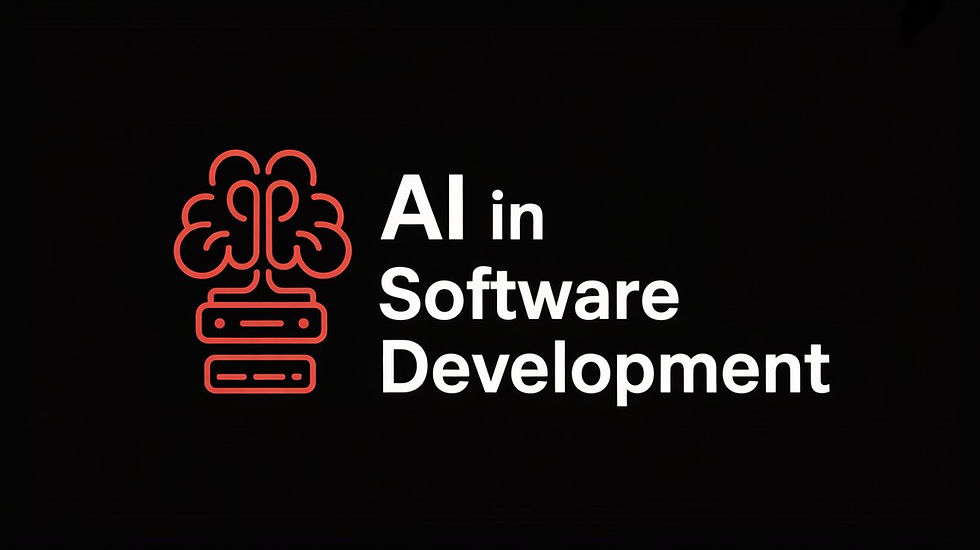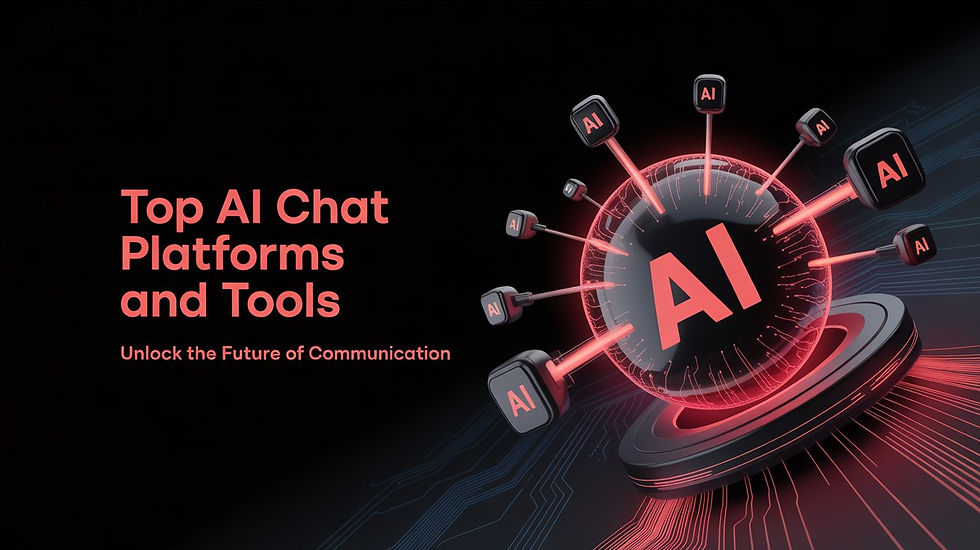AI Strategies: The Definitive Guide to Mastering Artificial Intelligence in 2025 and Beyond
- pengarhehe
- Mar 15
- 7 min read

AI Strategies
Artificial Intelligence (AI) isn’t just a buzzword it’s the engine driving innovation in 2025. From autonomous vehicles zipping through cities to chatbots that anticipate your every need, AI is transforming how we live, work, and think. But here’s the catch: AI’s potential doesn’t unlock itself. It requires a robust AI strategy a deliberate, actionable plan to harness its power for your goals. Whether you’re a business leader, a technologist, or a curious enthusiast, this guide is your ultimate resource for mastering AI strategies.
This isn’t a skimpy overview. This article dives deep into every facet of AI strategies: the technologies powering them, step-by-step frameworks, ethical considerations, industry applications, real-world case studies, cutting-edge tools, and future trends. AI Workflow Automation), GetResponse for AI-driven marketing insights.
Here’s what you’ll discover:
Core Technologies: The building blocks of AI.
Strategy Crafting: How to design a winning AI roadmap.
Execution: Turning plans into results.
Ethics: Keeping AI responsible and human-centric.
Industries: Practical applications across sectors.
Tools & Trends: What’s next for AI.
Ready to future-proof your approach? Let’s dive in.
Introduction to AI Strategies: Why They Matter in 2025
Picture this: It’s 2025, and AI isn’t just assisting it’s anticipating. A virtual assistant schedules your day before you ask, while an AI-powered factory predicts maintenance needs before a breakdown. This isn’t science fiction it’s the result of strategic AI adoption. An AI strategy is your blueprint to align this transformative tech with your unique objectives, whether that’s boosting efficiency, sparking innovation, or solving global challenges.
Why is this critical now? Because AI’s growth is exponential. According to a 2025 Statista report, the global AI market is projected to hit $1.5 trillion, up from $500 billion in 2022. Yet, without a strategy, you’re gambling with adoption risking wasted resources or ethical pitfalls. This guide equips you with everything you need to succeed, from foundational knowledge to advanced tactics.
For a deeper dive into practical applications, check out AI Automation in Manufacturing. Let’s start with the tech that makes it all possible.

Core AI Technologies: The Foundation of Your Strategy
AI isn’t a single tool it’s a symphony of technologies working together. To craft an effective strategy, you need to know the players. Here’s your 2025 lineup:
1. Machine Learning (ML)
Definition: Algorithms that learn from data to predict, classify, or decide without explicit programming.
Why It’s Key: ML drives insights from chaos think fraud detection or demand forecasting.
Real-World Use: A 2025 retailer uses ML to predict inventory needs, cutting waste by 25%.
Learn More: Explore Machine Learning in Automation.
2. Natural Language Processing (NLP)
Definition: AI that interprets and generates human language, powering chatbots and translation tools.
Why It’s Key: NLP makes tech conversational and accessible.
Real-World Use: A customer service AI handles 80% of queries via LiveChat.
3. Computer Vision
Definition: AI that “sees” and analyzes visual data like images or videos.
Why It’s Key: It’s revolutionizing everything from security to healthcare.
Real-World Use: Airports use computer vision to scan luggage 40% faster.
4. Robotics
Definition: AI-driven machines performing physical tasks, from assembly lines to surgery.
Why It’s Key: Robotics brings AI into the real world.
Real-World Use: See how it’s applied in Robotic Process Automation.
5. Generative AI
Definition: AI that creates content text, images, videos from scratch.
Why It’s Key: It’s a creativity multiplier.
Real-World Use: Marketers craft campaigns with Copyspace.ai.
Technology Comparison Table
These technologies don’t work in silos they overlap. A smart home might use NLP for voice commands, ML for energy predictions, and robotics for automated cleaning. Understanding them is your first step to strategic mastery.

Crafting an AI Strategy: Your 2025 Roadmap
An AI strategy isn’t a vague wish it’s a precise, actionable plan. Here’s a step-by-step framework to build one that delivers.
Step 1: Set a Clear Vision
Question: What does AI success look like for you?
Example: “Reduce customer support costs by 30% with AI by Q4 2025.”
Tip: Align it with your mission learn more at AI-Powered Business.
Step 2: Assess Your Ecosystem
Data: Do you have quality, accessible data? AI thrives on it.
Talent: In-house experts or external partners?
Needs: Where can AI add the most value?
Step 3: Choose Your Technologies
Match tools to goals. Need customer insights? Try NLP. Supply chain efficiency? ML and robotics.
Resource: Choosing the Right AI Automation Tool.
Step 4: Build a Phased Plan
Phases: Research, pilot, scale, optimize.
Timeline: “Launch NLP chatbot pilot by Q2 2025, scale by Q4.”
Budget: Account for tech, training, and maintenance.
Step 5: Measure Success
Metrics: ROI, accuracy, user adoption.
Tools: Use platforms like SERanking to track performance.
AI Strategy Blueprint
Think of this as plotting a cross-country trek: you need a destination, a vehicle, and checkpoints. Next, let’s execute it.

Executing AI Strategies: From Vision to Victory
A brilliant strategy flops without execution. Here’s how to make it happen in 2025.
1. Launch with Pilots
Why: Test feasibility and catch issues early.
How: Start small e.g., an ML model for one department.
Example: A startup tests Systeme.io for AI email automation.
2. Scale Strategically
Infrastructure: Cloud platforms like AWS or Azure handle growth.
Training: Upskill staff see How to Implement AI Automation.
Example: A retailer scales AI inventory from 5 to 50 stores.
3. Monitor and Refine
Track: Use dashboards for KPIs accuracy, speed, cost savings.
Tweak: Update models with new data.
Example: An AI chatbot improves via AI in Customer Service.
4. Tackle Challenges
Data Silos: Integrate systems.
Resistance: Show quick wins e.g., 20% time savings.
Costs: Focus on high-ROI areas.
Execution Checklist
Define pilot scope
Set baseline metrics
Train team
Scale with data
Review monthly
Execution’s where dreams become reality. But there’s a vital layer we can’t skip: ethics.
Ethical AI Strategies: Building Trust in 2025
AI’s power demands responsibility. Ethical lapses in 2025 can sink brands or spark lawsuits. Here’s how to keep it principled.
1. Transparency
How: Use Explainable AI (XAI) to clarify decisions.
Example: A loan AI explains rejections credit score, debt ratio.
2. Fairness
Challenge: Biased data leads to biased outcomes.
Solution: Audit datasets and outputs see Ethical Considerations in AI Automation.
3. Privacy
How: Minimize data collection, encrypt everything.
Compliance: Adhere to GDPR, CCPA, and beyond.
Example: A health AI anonymizes patient records.
4. Accountability
How: Keep humans in oversight roles.
Example: An AI legal tool flags cases for human review learn more at AI Automation in Legal.
Ethics Framework
Ethics builds trust—vital for adoption. Now, let’s explore AI in action.

AI Strategies Across Industries: Real-World Impact
AI’s magic lies in its adaptability. Here’s how it’s revolutionizing sectors in 2025.
Healthcare
Strategy: Accelerate diagnostics, personalize treatments.
Tech: ML, computer vision.
Example: AI cuts MRI analysis time by 35%—see AI Automation in Healthcare.
Education
Strategy: Customize learning, scale access.
Tech: NLP, generative AI.
Example: AI tutors boost scores by 20%—read AI in Personalized Education.
E-Commerce
Strategy: Optimize sales, enhance experiences.
Tech: ML, NLP.
Example: AI chatbots lift conversions by 15% with AI Automation in E-Commerce.
Finance
Strategy: Detect fraud, streamline operations.
Tech: ML, robotics.
Example: AI saves $50M annually—explore AI Automation in Finance.
Industry Snapshot
These examples show AI’s versatility. Let’s dive into case studies.
Case Studies: AI Strategies That Win
Real success stories bring strategies to life. Here are two from 2025.
Case Study 1: Healthcare - AI-Powered Diagnostics
Who: A leading hospital chain.
Problem: Backlogged scan reviews.
Strategy: ML for image analysis.
Results:
40% faster turnaround.
12% higher accuracy.
$15M cost reduction.
Takeaway: Precision trumps speed alone.
Case Study 2: E-Commerce - AI Marketing
Who: An online retailer.
Problem: Low email engagement.
Strategy: Generative AI via ActiveCampaign.
Results:
25% higher open rates.
18% sales increase.
Scaled to 500K customers.
Takeaway: Personalization drives revenue.
These cases prove strategy works. Next, the tools to make it happen.

Tools and Resources for AI Strategies
Your strategy needs the right toolkit. Here’s what’s hot in 2025.
Software
TensorFlow: ML for all levels.
Hugging Face: NLP and generative AI.
Make: Automate workflows—try Make.
Platforms
Google Cloud AI: Scalable solutions.
Azure AI: Enterprise-grade.
Scalenut: Content AI—check Scalenut.
Resources
AI Automation Tools: Best AI Automation Tools.
Courses: Coursera’s AI tracks.
Books: “The AI Advantage” by Thomas Davenport.
Tool Overview
Tools turbocharge strategies. What’s next?
Future Trends in AI Strategies
AI’s horizon is vast. Here’s what’s coming post-2025.
1. Quantum AI
What: Quantum computing supercharges AI.
Impact: Drug discovery in days, not decades.
2. AI for All
What: No-code platforms like Neexa.
Impact: Startups rival giants.
3. Green AI
What: Energy-efficient algorithms.
Impact: Aligns with sustainability—see AI in Energy Management.
Trend Timeline
The future’s exciting—and strategic. Got questions? We’ve got you.
FAQs on AI Strategies
What’s an AI strategy?
A tailored plan to leverage AI for specific outcomes.
Why focus on it in 2025?
AI’s a competitive edge—strategy maximizes it.
How do I begin?
Set goals, assess resources, pilot a tool—see AI Automation 2025 Guide.
What’s the top challenge?
Data quality—AI’s only as good as its fuel.
How do I ensure ethics?
Prioritize transparency and fairness—details at Ethical Considerations in AI.

Conclusion
AI strategies are your ticket to thriving in 2025 and beyond. This guide covers it all: tech foundations, strategic planning, ethical execution, industry wins, tools, and trends. Start today—pilot a project, explore AI Automation Trends, or boost your marketing with AWeber. The AI revolution’s here—your strategy decides your role in it.





Comments